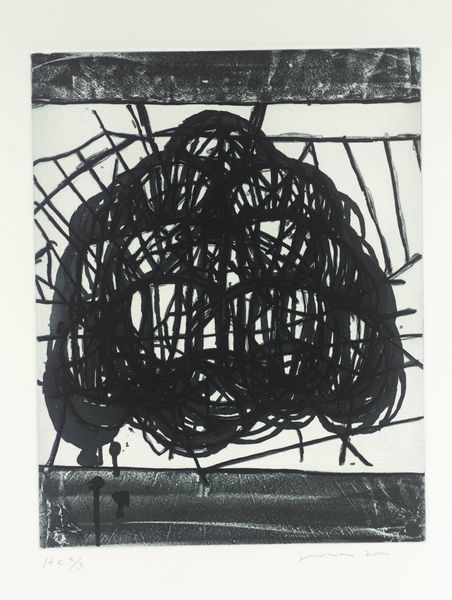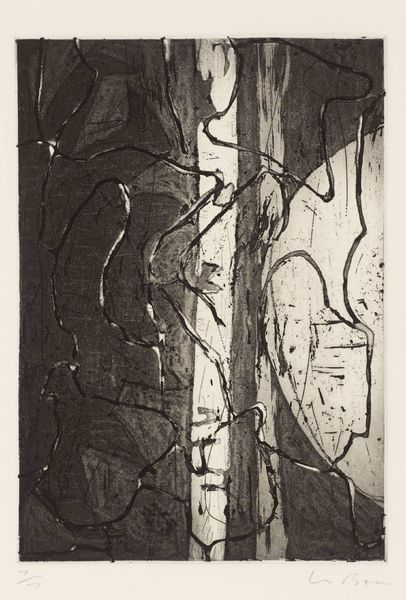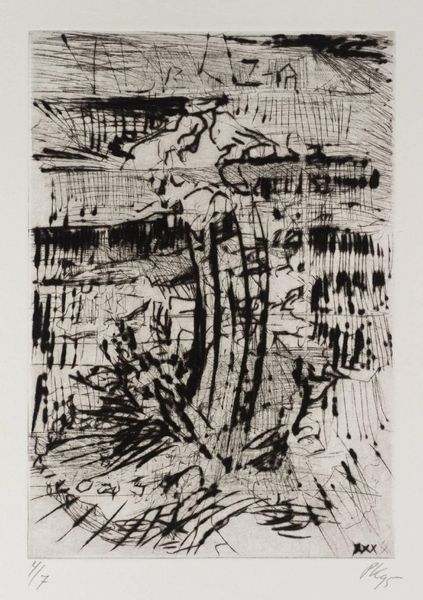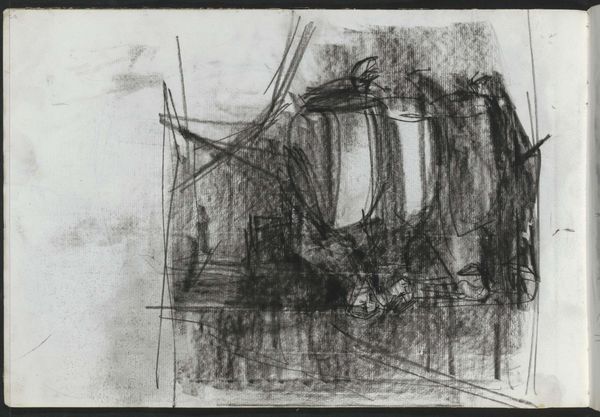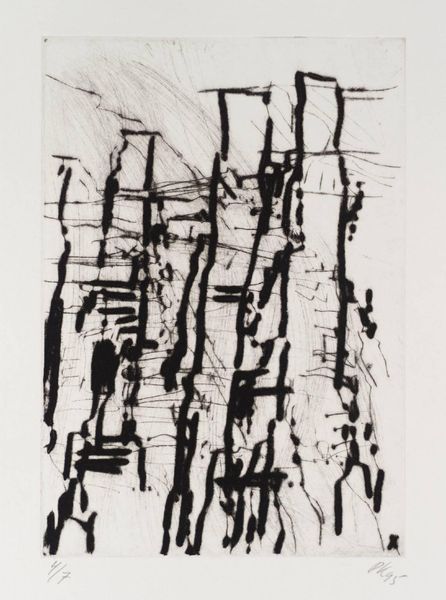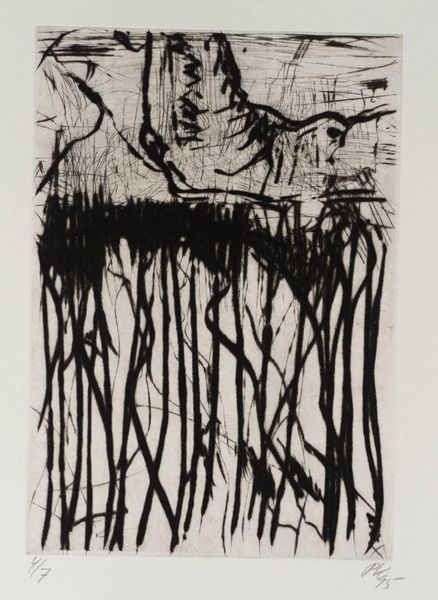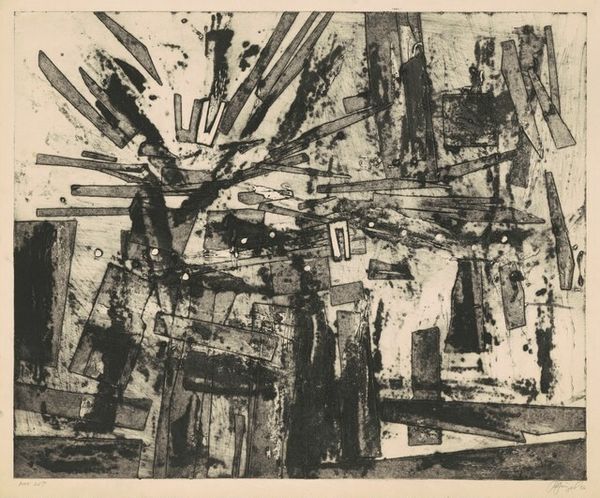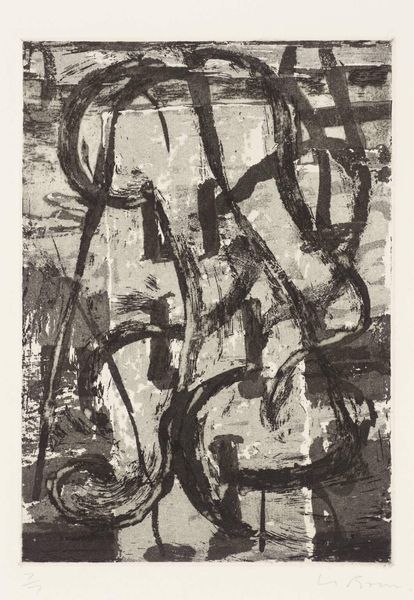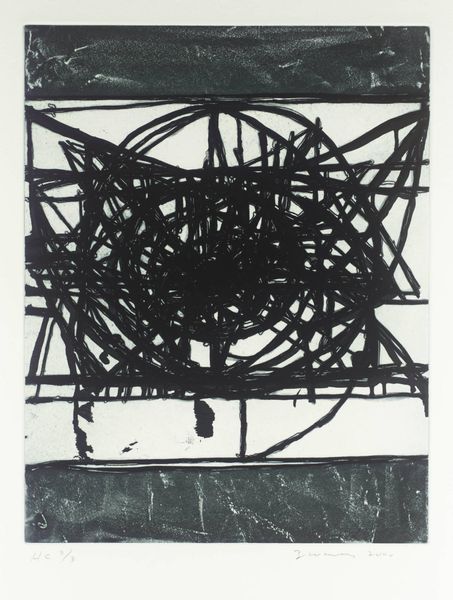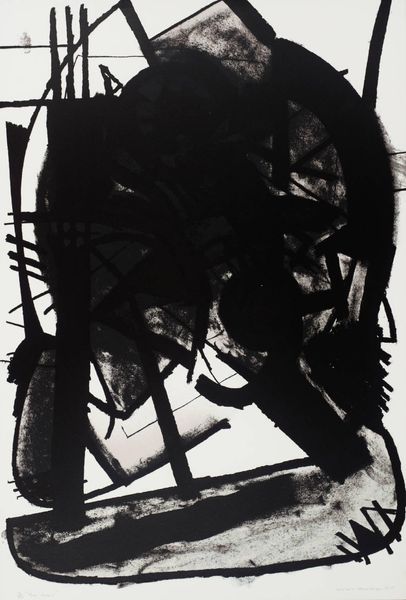
print, etching
#
abstract-expressionism
#
st-ives-school
# print
#
etching
#
geometric
#
abstraction
#
line
Copyright: Terry Frost,Fair Use
Curator: Looking at this etching titled "Composition," created by Terry Frost in 1957, I am struck by its raw energy. It feels almost like a deconstructed cage, or perhaps even the skeletal remains of a building after some cataclysm. What is your initial impression? Editor: That raw energy, as you put it, is palpable. I feel it viscerally too. To me it evokes a sense of confinement but also chaotic, untamed movement. It’s definitely unsettling. What’s interesting to me is the intersection of rigid lines with these looser, more gestural marks, almost like drips. Curator: It is this tension between order and chaos that makes the piece so engaging. Frost worked a great deal with printmaking processes, especially etchings. It’s essential to remember that these images were made in reverse and printed by hand on an etching press, requiring physical labor and skill in each copy. It makes each piece of the edition unique, a testament to the process itself. Editor: I find it powerful how he juxtaposes that rigid geometric structure— the suggested circle shape — with what looks like completely spontaneous applications of ink. Those ‘drips,’ as I called them, introduce chance, right? But isn’t control itself part of the problem here? Is the pursuit of it always constructive, or can the relinquishing of control be more liberatory, even artistically? Curator: Absolutely. Frost’s art challenged traditional expectations of composition and form by bringing process to the forefront, almost like deconstructing formal painting norms right there on the plate itself, making the means of production— the labor — visible. It begs us to reconsider our notions of 'finished' or 'perfect.' Editor: Right, the means *are* the ends in some respects. And thinking about Frost working in post-war Britain, that desire to challenge established modes feels quite relevant in relation to the rebuilding, the uncertainty, and those sorts of shifting social frameworks. Curator: Yes, thinking about that cultural context really deepens the work. It isn't just an abstract exercise but a product of specific historical conditions and anxieties. Editor: It’s fascinating how the work speaks differently depending on whether one centers technique or that socio-political context. Curator: I'm happy that, between process and its resonance, the artwork lets us consider different levels of creative intervention in times of upheaval. Editor: Yes. Hopefully, the work sparks a critical dialogue for everyone who takes the time to consider it more deeply.
Comments
No comments
Be the first to comment and join the conversation on the ultimate creative platform.

